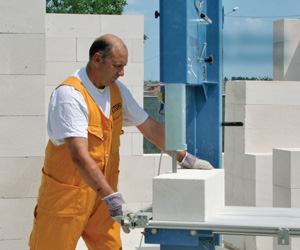Fran Colangelo
KingPost Design & Construction, Wilmington, N.C.
Fran Colangelo started out as a wood butcher, but lately he’s become a real blockhead. No offense intended, of course; the blocks in question are made of autoclaved aerated concrete, or AAC, a material that Colangelo believes has significant advantages over wood in his part of the country. With its cycles of hot weather, cold weather, and high humidity, “coastal North Carolina has the worst building environment,” Colangelo says. “Wood is a liability down here. It looks nice, but it doesn’t make sense down here.” Colangelo first explored AAC as an alternative to stick framing with block veneer and stucco for a house in a coastal flood zone.
Walls of 10- and 12-inch solid AAC block by Xella give the house a virtually monolithic shell, while a network of poured-concrete beams and AAC planks up to 20 feet long comprise a rot-proof floor system. “The only wood will be the interior walls and roof,” Colangelo says. Rather than fir out the perimeter walls, he routed channels in the block between courses and installed rigid conduit for his electrical runs. “You attach drywall right to it with a plastic fastener. It’s not permeable to vapor, so you can put drywall right to the block.”
Due to their tightness and thermal mass, Colangelo says that AAC buildings heat and cool more efficiently than frame structures with higher nominal R-values. “I’m excited about it,” he says, “and not just for this expensive house. I think it could be a great, affordable, green way to build.”



